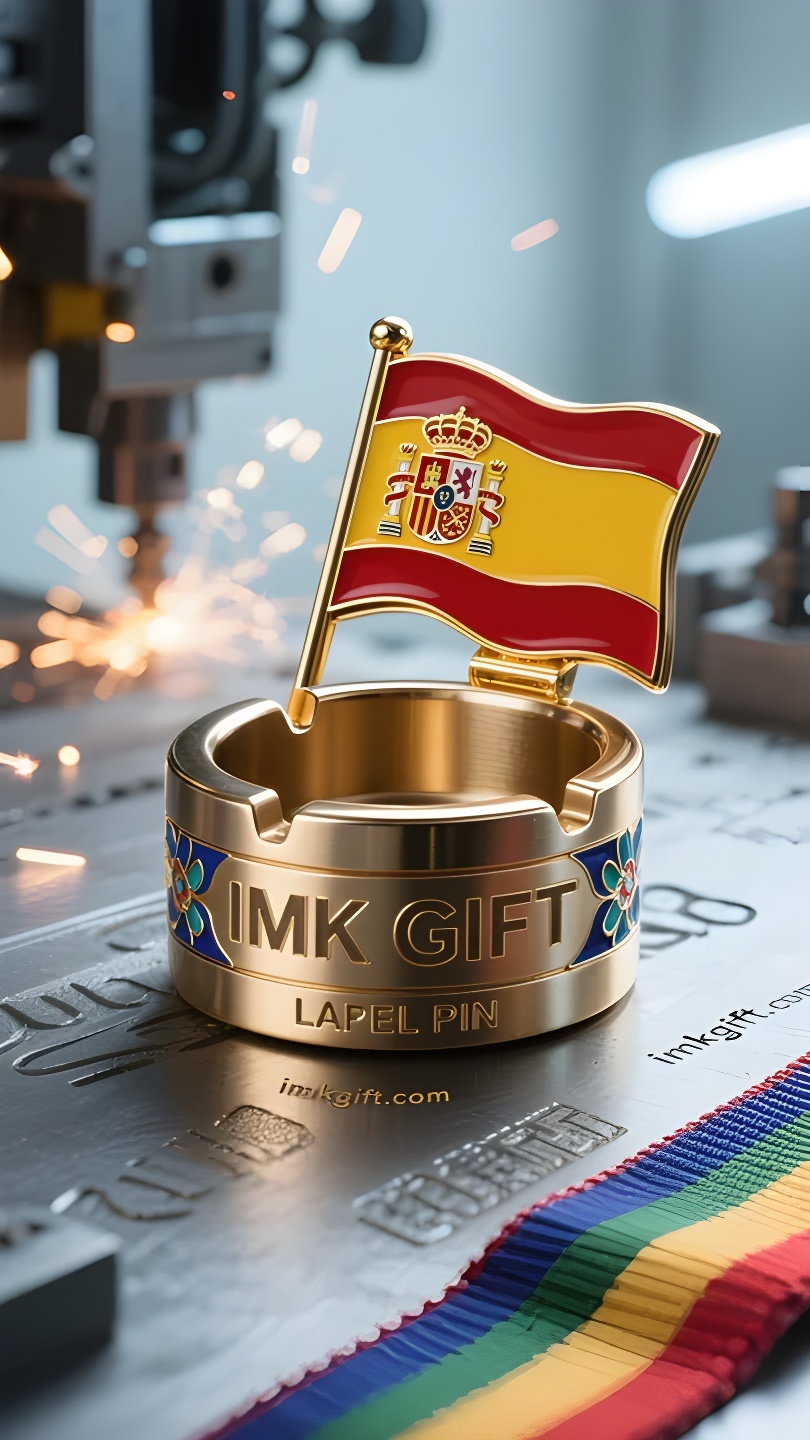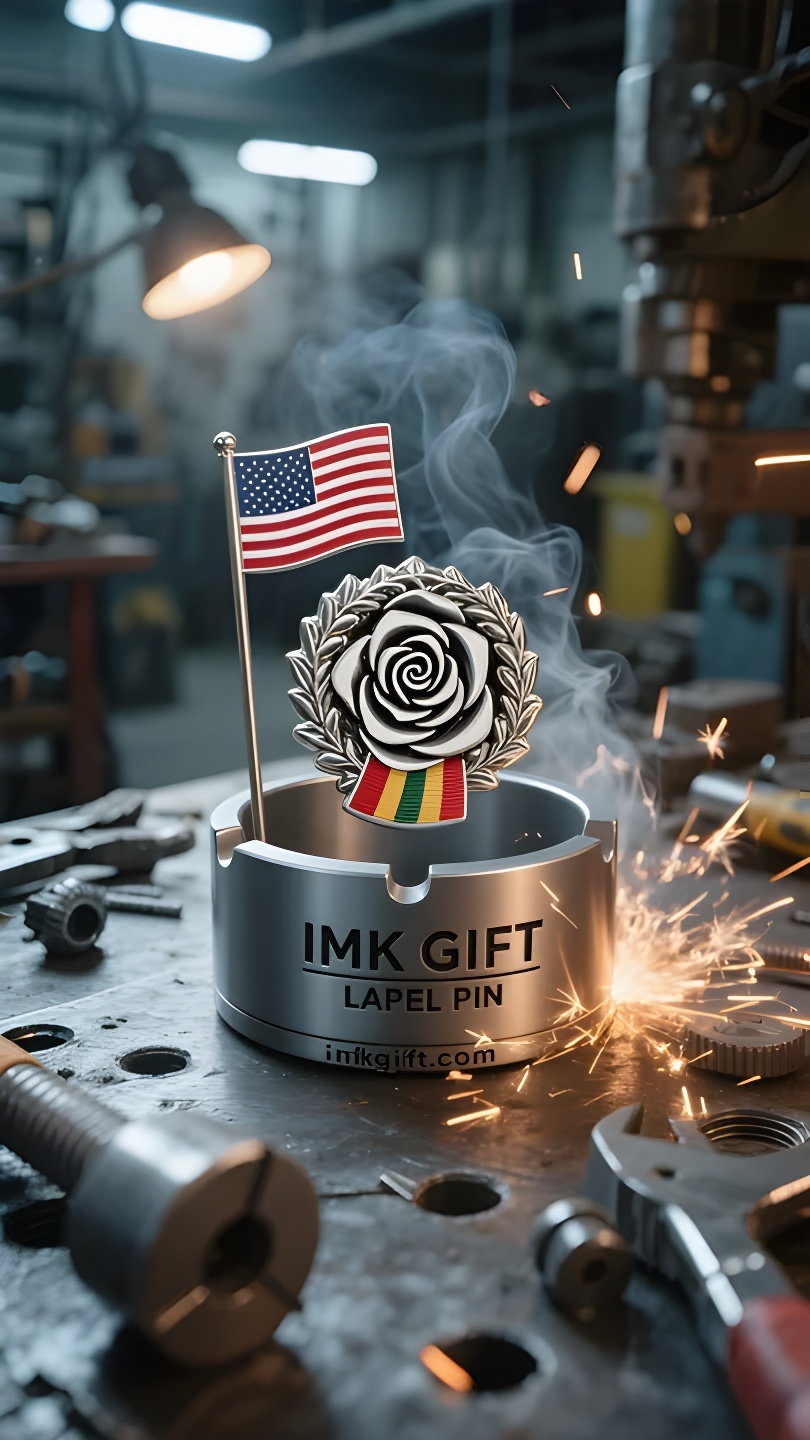in984-Gloria-en-las-cenizas-La-llama-eterna-del-espíritu-español
▼
Cada 12 de octubre, las calles de España se iluminan con banderas nacionales rojas y amarillas, y la Columna de Hércules y el escudo del emblema nacional brillan bajo el sol. Este día nacional, que conmemora el desembarco de Colón en América, no es solo una mirada retrospectiva a la historia, sino también una interpretación contemporánea del espíritu nacional. En el taller de un artesano en Andalucía, al sur de España, se pule cuidadosamente un cenicero de hierro fundido con el emblema nacional en relieve. Los patrones cóncavos y convexos representan la corona, el castillo y el león. Al caer la ceniza, esta y el tótem metálico forman un diálogo maravilloso; es como una metáfora de la historia española: la gloria quedará cubierta de polvo, pero el fuego de la civilización nunca se apagará. El diseño curvo del borde del cenicero se alinea con el ondear de la bandera nacional, como si dijera: el fin de cada era es el preludio de una nueva vida. Desde el humo de la Reconquista hasta el dolor de la transformación democrática moderna, los españoles siempre pueden reavivar su fe en las cenizas. Al igual que las brasas que se enfrían gradualmente en el cenicero, parece silencioso, pero en realidad alberga la posibilidad de reavivarla. La textura rugosa que los artesanos conservaron deliberadamente durante la fundición recuerda que la gloria nunca es perfecta, sino la dignidad que se mantiene erguida tras la combustión. Cuando los fuegos artificiales de la celebración iluminan el cielo nocturno de Madrid, las chispas que caen en los ceniceros de miles de hogares presencian en silencio la vitalidad de esta nación como un ave fénix que resurge de sus cenizas. Las cenizas no son el fin, sino el alimento para la próxima era gloriosa.
Every October 12, the streets of Spain are lit up by red and yellow national flags, and the Pillar of Hercules and the shield on the national emblem shine in the sun. This national day commemorating Columbus’s landing in America is not only a look back at history, but also a contemporary interpretation of the national spirit. In the craftsman’s workshop in Andalusia, southern Spain, a cast iron ashtray with a national emblem as a relief is being carefully polished. The concave and convex patterns carry the crown, castle and lion. When the ash falls into it, the ashes and the metal totem form a wonderful dialogue – this is just like a metaphor of Spanish history: glory will be covered in dust, but the fire of civilization will never go out. The curved design of the edge of the ashtray is in line with the flow of the national flag, as if telling: the end of each era is the prelude to a new life. From the smoke of the Reconquista to the pain of modern democratic transformation, the Spanish can always rekindle their faith in the ashes. Just like the embers gradually cooling in the ashtray, it seems silent, but in fact it contains the possibility of rekindling. The rough texture that the craftsmen deliberately retained during casting reminds people that glory is never flawless, but dignity that remains upright after burning. When the fireworks of the celebration illuminate the night sky of Madrid, the sparks that fall into the ashtrays of thousands of households are silently witnessing the vitality of this nation like a phoenix rising from the ashes. Ashes are not the end, but the nourishment for the next glorious era.
每年十月十二日,西班牙的街道被红黄相间的国旗点亮,国徽上的海格力斯之柱与盾徽在阳光中闪耀。这个纪念哥伦布登陆美洲的国庆日,不仅是对历史的回望,更是一场关于民族精神的当代诠释。
在西班牙南部安达卢西亚的工匠作坊里,一款以国徽为浮雕的铸铁烟灰缸正被精心打磨。凹凸的纹路承载着王冠、城堡与雄狮,当烟灰落入其中,灰烬与金属图腾形成奇妙对话——这恰似西班牙历史的隐喻:辉煌会蒙尘,但文明的火种永不熄灭。烟灰缸边缘的弧形设计,暗合国旗的流动感,仿佛在诉说:每个时代的终结,都是新生的序章。
从收复失地运动的烽烟,到近代民主转型的阵痛,西班牙人总能在灰烬中重燃信念。就像烟灰缸里渐渐冷却的余烬,看似沉寂,实则蕴藏着复燃的可能。工匠在铸造时特意保留的粗粝质感,提醒着人们:荣耀从非完美无瑕,而是历经灼烧依然挺立的尊严。
当庆典的烟火照亮马德里夜空,那些落在千家万户烟灰缸里的星火,正默默见证着这个民族凤凰涅槃般的生命力。灰烬不是终点,而是下一个辉煌时代的养料。
▼
Contact Us
📞 Tel: +0086-760-85286839
📧 Email: sales3@imkgift.com








